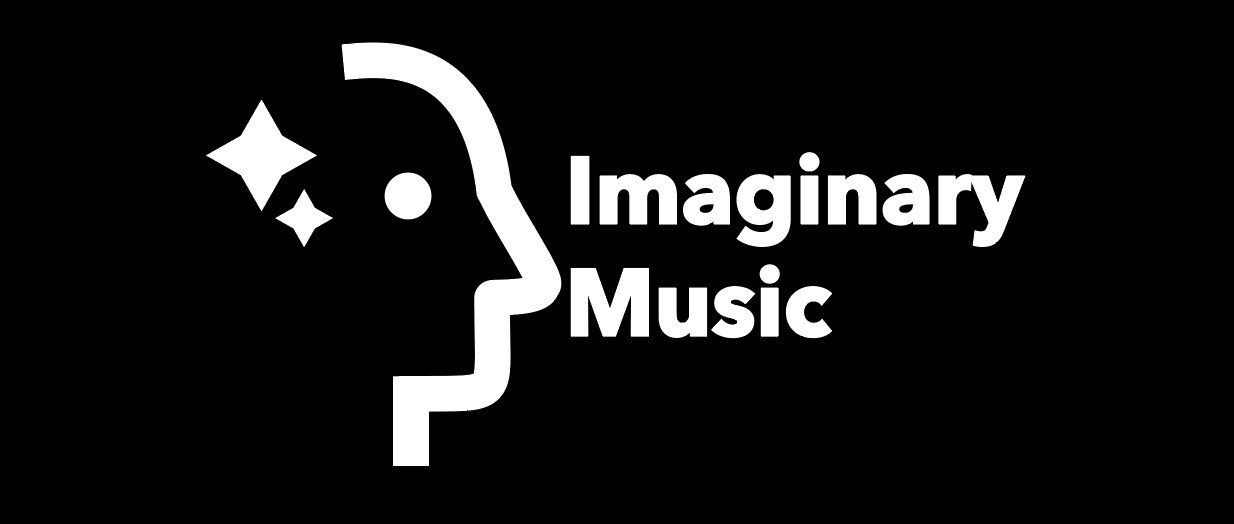Imaginary Music is an exploration of those psychophysical boundaries between sounds in their physical morphology and their imaginative representations in human beings’ mind. The aim for this installation is to experiment with the human brain and present the public a new ground-breaking genre: Imaginary Music. The installation seeks to question the necessity of sound's physicality in music and suggests new concepts for music composition and music listening.
In order to perceive sound, a process of translation from sound waves in the air to electrical signals in our brain needs to happen. These signals are then acknowledged and processed by our brain in order to understand them. Human beings have an incredibly developed capacity to understand sound. Our auditory system encodes vibrations using parameters like pitch, timbre and rhythm. This encoding happens through a mixture of innate capacities of the brain to interpret sound based on scientific laws – an example is the idea of musical harmony, which is based on combination of frequencies with periodical values-, a cultural auditory background and our personal memories.
Recognising the duality of sound’s nature - a physical event and a neurological reinterpretation of its waves’ morphology - enables us to isolate and understand the cognitive tools we use to perceive music to then speculate on the possibilities of our imaginative power. These are the tools that make possible an imaginative creation of music.
Music lives in our heads. This digital installation has the aim to encourage people to train their imaginative capacities through short exercises and examples. These include different media in order to inspire imagination: videos, pictures, sounds and texts can help our imagination create sound in our head. These short exercises have the aim to lead the virtual visitor to discover the main cognitive tools that our brain uses (pitch, rhythm) to understand sound and experiment with them to create imaginary music.
The exercises are not focused on the result, which could turn out to be non-musical or abstract, instead the visitor should concentrate on the psychological path their brain is following and start to question the necessity of physicality in sound. This process is eventually going to introduce the visitors to the tools available to our brain to imagine music.

EXERCISES WITH SOUND
EXERCISE WITH COLORS
These first two exercises challenge the listener to imagine additional sounds for simple compositions made with only one musical element.
The first composition is made with only a chord progression. The listener is encouraged to imagine musical elements like a drum line, a melody or a bass line.
The second composition is made only with a drum line. The listener is encouraged to imagine musical elements like melody, chords or a bass line.
This exercise challenges the digital visitor to link a pitch to a sequence of four looping colors and create imaginary melodies. The visitor is encouraged to focus on the connections happening in their brain in relations to different colours. The results can vary from very musical and harmonically correct melodies to new musical scales and pitches' progressions.
EXERCISE WITH TEXT
This text-based exercise encourage visitors to imagine music with letters, words, sentences, languages. The idea for this exercise is based on the concept of Text Scores, experimental musical scores adopting only textual elements to describe a compositional process.
For this exercise, follow these 2 steps and reflect on your imaginative process. Even if there is no apparent musicality in words, your brain is going to come up with a short melody.
EXERCISES WITH DANCE/ MOVEMENT
1. Pick at least 4 words randomly. Possibly do not say them out loud.
2. Sing them in your head.
To make this exercise more challenging, try to choose words from the same context and think of a short narrative to base your imaginary composition on.
These exercises encourages the visitor to discover musical dynamics through the movement of the body.
1# THE SILENT SAMPLER:
In order to perform this exercise's task the visitor should:
1. Identify with a sound two or more of their fingers (e.g.: Kick Drum, Snare Drum);
2. Imagine having a piano's keyboard under the two fingers;
3. Create a composition by triggering those imaginary keys with their fingers. Each of the two 'notes' played should reproduce the same sounds identified for each finger before in the visitor's head.
2# THE BODY ORCHESTRA:
In order to perform this exercise's task the visitor should:
1. Identify with a sound or musical parameter like pitch or loudness each of their limbs;
2. Modulate these sounds with body's movements.
This exercise can be performed at any speed and different speeds of the movements are going to give different results. The visitor should let his imagination lead the flow, without fearing a possible loss of control of the musical parameters.
Although it would be recommended to try and perform this last exercise actively, an alternative video of a dancer is provided to offer to any visitor a possibility to try imagine music through the movement of a human's body.
These exercises have been designed to train the visitors' imagination and show the musical potential of their brains. Nevertheless, imagination is a tool (or musical instrument) available for every human being in most of their everyday life situations.
Imaginary music can bring benefit to everyone by practicing it mentally. Training the brain with imagination improves problem-solving skills, helps in preserving memories and developing self-confidence. Practicing imagination also has professional advantages for people working in the creative industry. Furthermore, it might allow the discovery of new ways of experiencing music for deaf people.
Training imagination helps the brain to fill with self-thought ideas and create new intellectual paths for human beings thinking outside of society's standards.
References and Bibliography
NIDCD. 2018. How Do We Hear?. [online] Available at: [Accessed 2021].
McDermott, J. and Oxenham, A., 2008. Music perception, pitch, and the auditory system. [online] National Center for Biotechnology Information. Available at: [Accessed 2021].
R. Chiurazzi
(BA) Sound Arts & Design 2020/21
Please share your reactions and thoughts:
r.chiurazzi0220191@arts.ac.uk